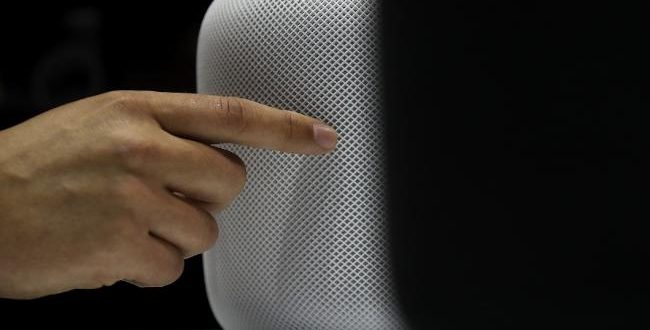After two years Apple has finally released a new product: HomePod. Some will say it has been a long time coming when you consider Apple’s glorious past — iPod, iPhone, MacBook Air, iPad — and the fact its previous new device, Apple Watch, was released in 2015.
HomePod is an 18cm-long speaker that not only plays Apple Music, with its 40 million song library; it also has Apple’s personal assistant, Siri, baked into it. As with more established rivals Amazon Echo and Google Home, you’ll be able to ask Siri on HomePod to tell you the news, weather and about the traffic to work, set reminders, make calendar entries, dictate iMessages and more. You can do most of these with Siri on your iPhone now.
With HomePod, the news and weather will have to be spoken rather than displayed on a phone screen. It’s hands-free operation, so you can give instructions as you come home carrying the weekly shopping, or your hands are covered in flour in the kitchen.
HomePod will be able to manage your shopping list. This is available with Siri already. You can try it now. Manually create a list-type reminder on an iPhone called “shopping”, then ask Siri to “add butter to my shopping list” and she will. When you’re at the supermarket, tell Siri “read out my shopping list” and she will.
Here, Apple is playing catch-up with Amazon Echo and Google Home. Echo is not yet available in Australia but in the US has amassed more than 10,000 skills through third-party contributions.
Google Home which is due in Australia from mid-year, has excellent natural language capability and good local knowledge built up by Google through years of Android use, and can recognise different members of a family when each speaks to it.
Apple, in contrast, is just starting out. It is marketing HomePod primarily as a capable speaker that can adjust audio output based on room dimensions. HomePod has an array of seven tweeters, a 4-inch woofer and six microphones to hear what you ask.
While Australian pricing is unknown, at $US349 ($467) in the US it’s by no means a high-end speaker — but with Apple technology it will probably punch above its weight. Emphasising its music capability may be enough to entice Apple users to buy it ahead of its rivals.
But Google and Amazon remain ahead in the home-control stakes.
So what about that other fast-developing consumer tech area: virtual reality and augmented reality? Will Apple be the leader there? Unlike Google and Microsoft, Apple has not built a VR or AR headset, or planted phones in the back of headsets to drive VR experiences as Samsung does with Gear VR.
This year’s Worldwide Developers Conference suggests Apple is playing a different game. It wants its devices to be the leading choice for developers creating VR and AR content.
Apple says its new 27-inch iMac Pro can deliver up to 5.5 teraflops of computing power which it says makes it a great platform for creating VR content. It has announced upgraded software called Metal 2, a tool developers can use for graphics development for VR.
While it hasn’t produced an AR device similar to Microsoft’s expensive HoloLens, Apple this week announced what it called an ARKit: software that will let developers create clever augmented reality experiences on iPhones and iPads. It’s the nearest Apple gets to Google’s Project Tango, which enables AR initially on two special Android phones by Lenovo and Asus.
Apple may wait until it has developers aboard and applications ready before producing a VR or AR headset, if it intends to.
But in the connected home and the VR and AR spaces — two rapidly developing areas — Apple isn’t the shining light at the head of innovation.
Yet leading the technology pack does not necessarily equate to making the best product. Indeed, yesterday Apple chief executive Tim Cook said the company aimed to be the best, not first to market. Time will tell if Apple makes a killing in these areas that are shaping the future of consumer technology.
Reader comments on this site are moderated before publication to promote lively and civil debate. We encourage your comments but submitting one does not guarantee publication. We publish hundreds of comments daily, and if a comment is rejected it is likely because it does not meet with our comment guidelines, which you can read here. No correspondence will be entered into if a comment is declined.





